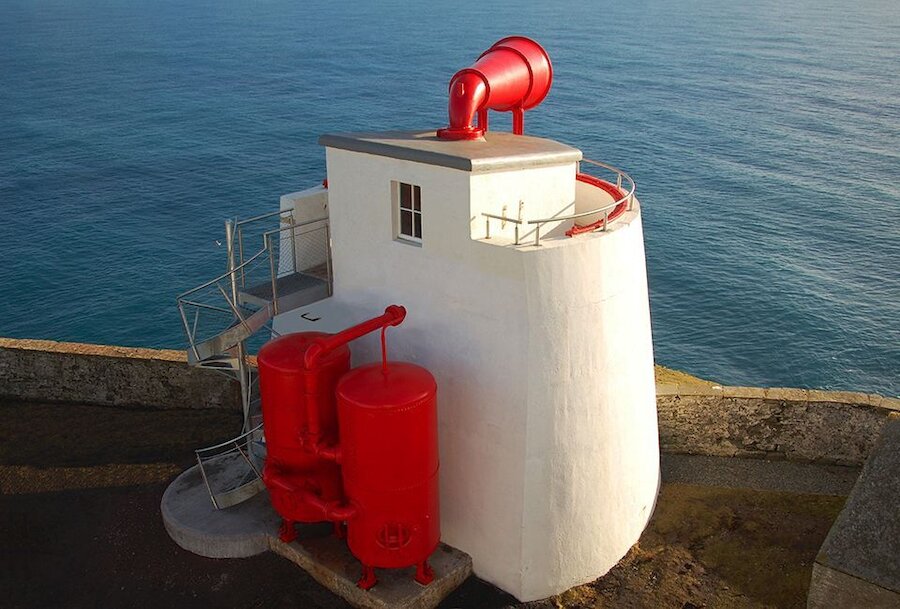The foghorn at Sumburgh Head Lighthouse, which has been out of use for nearly 30 years, has been sounded for the first time since 1987.
The foghorn was constructed in 1905 and was first used the following year. To sound the foghorn, air is compressed and stored in large tanks called air receivers. The compressors and the diesel engines that drive them are housed in an engine room that forms part of the lighthouse complex. Kelvin engines replaced the original Crosleys in 1952.
Every foghorn has a “character”, or sounding pattern, that differs from other fog signals in the area, Sumburgh's character being one seven second blast every 90 seconds. It's controlled by an air driven clockwork mechanism which operates valves in the correct sequence, and at the correct time, releasing air into a siren. The siren spins around to create the noise, which is amplified by the trumpet. The air pressure required is 25psl before the blast, dropping to 15psi during the blast.
Originally there were eight receivers, but three were removed during automation of the station. The two external receivers at the base of the foghorn tower, shown in the photograph, are unusable owing to corrosion and have been blanked out for safety. The system has been amended to operate on the remaining three receivers located in the Engine Room, which are in good order.
The foghorn at Sumburgh is of a siren diaphragm type that was once common, but the one at Sumburgh is now the only working example left in Scotland and possibly the world. Other foghorns, such as the one at North Ronaldsay, can operate but are of a different type and system.
Those present at the sounding didn't just hear the foghorn, they also felt it, because the instrument produces a hugely powerful blast. Visitors to Sumburgh Head will occasionally be treated to the experience, with sounding days publicised in advance.

